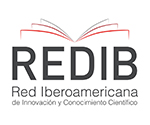Contrastive Study of the Semantics of White and Black in Spanish and Chinese Phrases
DOI:
https://doi.org/10.18002/sin.v17i2.8237Keywords:
Spanish and Chinese phraseological units; semantics of chromatic words; contrastive study.Abstract
The present work establishes a corpus that includes the phraseological units comprising “white” and “black” in 8 Spanish dictionaries and 6 Chinese dictionaries, within which a quantitative and qualitative analysis is carried out on the semantics of said phraseological units. The study discovers that through the metaphorical and metonymic process, similar figurative meanings come mainly from the physical perception of the environment and one's own colors, and the different meanings are motivated by cultural specificity, especially religions, superstitions, mythologies and legends; in Spanish, the figurative meanings of white and black constitute a violent contrast, while this antagonism is blurred in Chinese. Furthermore, in both languages, black is mainly associated with negativity, but the connotation of white is mixed and complicated; in the corpus, white in Chinese belongs to broader grammatical classes, which not only serves as a noun or adjective, but also a verb and adverb; and the verbalized white in Chinese is usually associated with “speak” and the adverbialized one is linked to the meanings “in vain” or “without cost.”
Downloads
Métricas alternativas
Published
Versions
- 2024-03-11 (5)
- 2024-03-06 (4)
- 2024-03-06 (3)
- 2024-02-15 (2)
- 2023-12-28 (1)
How to Cite
Issue
Section
License

This work is licensed under a Creative Commons Attribution-NonCommercial-ShareAlike 4.0 International License.
Sinología Hispánica. China Studies Review considers all manuscripts on the strict condition that:
- The authors assign the exploitation rights (reproduction, distribution, public communication and transformation) of the work accepted for publication to the University of León on a non-exclusive basis. Authors can establish, on their own, additional agreements for the non-exclusive distribution of the version of the work published in the journal (for example, placing it in an institutional repository or publishing it in a book), always acknowledging the initial publication. in this magazine.
- The manuscript is your own original work and does not duplicate any other previously published work, including your own previously published work.
- The manuscript is not currently under consideration or peer review, nor accepted for publication, nor in press, nor published elsewhere.
- The manuscript contains nothing that is abusive, defamatory, libellous, obscene, fraudulent, or illegal.
- Please note that Sinologia Hispanica uses Turnitin software to screen manuscripts for unoriginal material. By submitting your manuscript to Sinologia Hispanica you are agreeing to any necessary originality checks your manuscript may have to undergo during the peer-review and production processes. Any author who fails to adhere to the above conditions will be rejected.
- Authors are allowed and encouraged to electronically disseminate the pre-printed versions (version before being evaluated) and / or post-printing (version evaluated and accepted for publication) of their works before publication, since it favors their circulation and dissemination more early and with it, a possible increase in its citation and reach among the academic community.
Sinologia Hispanica is under an international license Creative Commons Attribution-Noncommercial-Share Alike 4.0. You can read more about this license in an informative version and legal text.








